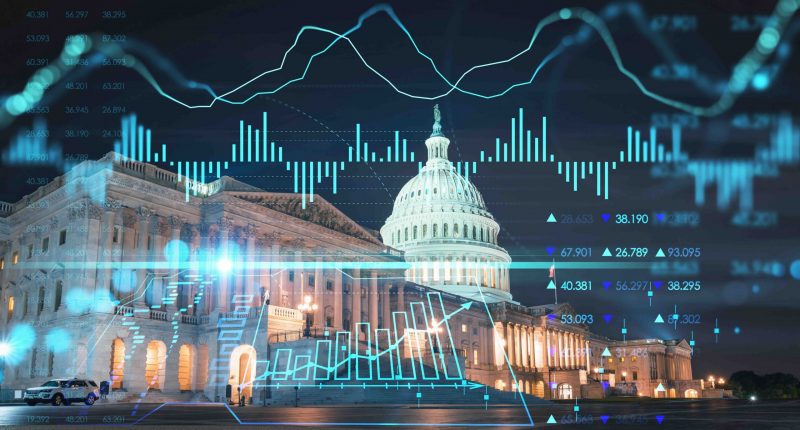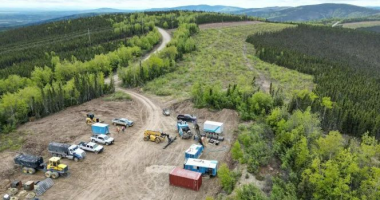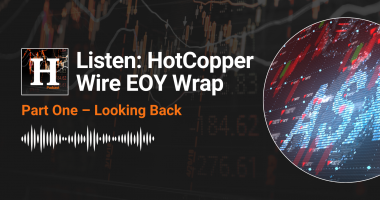While it’s far from true to say global trade has become fully ‘deglobalised’ at the halfway point of 2024, when it comes to critical minerals, there’s a very clear trend towards that end in the US.
Or, at least, a pull away from China – long the dominant miner and producer of many metals the bedrock of our modern way of life.
The COVID-19 pandemic – effectively a modern plague – has well and truly passed its peak, but the supply chain issues it caused continue to pose problems for the global economy. To remind: COVID hit, global lockdowns kicked in, but demand for goods kept rising shortly thereafter.
But the world was shut down, and it was far harder for a lot of the world to get back to work.
Crude prices soared as rigs took years to come back online, lithium prices soared as demand outstripped supply due to a lack of operating mines, and those who were poised to supply made billions.
Just look at Pilbara Minerals (ASX:PLS). That company became a giant fairly rapidly as it had the right thing at the right time – lithium-rich spodumene.
While this window of economic history is increasingly distant, the lessons it taught us are not.
Then, when things seemingly couldn’t get worse, Russia invaded Ukraine – and suddenly, the global sense of peace the world enjoyed (based in reality or not) fell apart. A refreshed US-China trade war notwithstanding, it was ultimately in late February of 2022 a strong shift towards deglobalising critical mineral supply chains kicked off.
A story familiar to history
Through history, all major plague events have preceded massive changes to global power structures.
That’s what we’re seeing right now, and there’s untold potential for investors in miners across the western world.
The defining feature of the current shift of power I’m putting forward is a turning away from Chinese producers of critical minerals America in particular needs to develop its own renewables and defence sectors.
Tech has also come to the fore – microchip tariffs have been the key feature of the latest US-China ‘trade war’ – but before microchips came to prominence, it was minerals. (And guess what you need to make microchips?)
Some of these minerals have become household names, at least for traders: lithium, nickel, and copper – as well as cobalt, and other metals needed for electrification and modernisation broadly.
The way the United States produces and uses commodities is changing, with the country pivoting towards self-sufficiency for sovereign capability. In other words: the country doesn’t want to be reliant on any other country for critical minerals it needs. Especially China.
This same pivot towards self-sufficiency is currently being prioritised in Australia, Canada, and Western Europe. Australia finds itself in an interesting position – tied between a reliance on China for its own economic gain, and a clearly felt need for a greater internal domestic supply capacity.
Australians are well familiar with the feeling of being caught between two economic superpowers.
So let’s just focus on America.
Taking stock of the present
The US currently stands on the precipice of another Trump election, where the ever-sensational former President has declared he will introduce tariffs on all imports of any Chinese goods into the US.
While this would probably kick off a new wave of inflation in the world’s leading economy, if he actually goes through with it, the USA’s strategic domestic supply chain initiatives will only become more important.
And if Biden wins again, the same will be true. So from that point of view, who wins the 2024 US election doesn’t really matter for the overarching trend of ‘soft deglobalisation’ – a term I am coining now, for lack of a better description.
The USA’s ability to mine, process, and market its own critical minerals from upstream to downstream is almost guaranteed to remain a strategic objective, regardless of what happens politically, through the 2020’s and beyond.
Unless, of course, China and the US suddenly get over their differences and become best of friends, riding off on a chic tandem bicycle into the sunset of a Promising Tomorrow.
It goes without saying this probably won’t happen.
So what minerals are most important?
The USA’s recent push to construct EV lithium battery gigafactories remains, for now, the most obvious evidence of a country ramping up its internal critical mineral production capacity. Australia’s rare earths sector is going through a similar revitalisation with Arafura Rare Earths (ASX:ARU) and peers receiving government support from Canberra.
The USA, neighbour Canada and ally Australia all boast a fairly extensive critical minerals list, and one trend connects them all – decarbonisation metals. (Again, we’re ignoring microchips for this article.)
Copper is used in electrical wiring; nickel has myriad applications in everything from EV batteries to chemical production. Lithium is obvious – EV batteries – but metals like cobalt and the rare earth element (REE) family are also needed in everything from grid-scale energy storage batteries to wind turbine engines.
What’s probably most important to note for veteran traders familiar with playing geopolitics is that prioritisations of domestic supply capacity coming from aforementioned western nations aren’t just waffling policies that culminate in a good photo opportunity.
Consider this: both Australia and Canada have recently forced Chinese investors to reduce stakes in key critical minerals projects in each jurisdiction respectively.
And in the background of all this, a lot of companies are quietly (or loudly) setting up mines across the USA to supply the demand which is forecast to grow for all the above metals through the 2020’s.
This is true, in fact, for the western world broadly.
Notably, even Brazil is ramping up its REE production to stand apart from China and offer its ore to the west, too, despite its participation in the BRICS collective. (Korea is also posturing to reduce reliance on China.)
By now, you firmly get the idea.
Luckily for ASX investors and traders alike, there are multiple publicly-listed Australian companies operating in the jurisdiction, and set to gain from a strategic US turn towards internal production.
Here are 4 stocks worth keeping an eye on; critical minerals producing or otherwise.
4 ASX stocks to watch
Note: all stock price information below is accurate as at ~2.15pm AEST Friday 21 June 2024, per a third party service that ports Morningstar data. The companies below are exposed to the US but there is no guarantee of future returns. This list is not intended to be financial advice and traders ought to be aware exploration companies are extremely high-risk. All companies have a commercial relationship with this masthead.
Sun Silver (SS1)
- Share price: 54cps
- Market cap: $37.2M
- 1Y returns: +167.5%
- YTD performance: +167.5%
- 4w average volumes: 1.79M shares
Sun Silver (ASX:SS1) is predominantly a silver explorer with gold part of its flagship MRE, coming in at a globally significant 292Moz in aggregate. Equivalent grades come in at 72.4g/t of silver respectively.
Developing the Maverick Springs silver project in Elko County, Nevada, the company is heading towards a maiden drill run in 2024. The company most recently logged new outcrop targets on-site its Maverick acreage, suggesting geotechs could grow further yet the 292Moz resource.
Overlying desirable geology and kicking off at a time when gold and silver prices have experienced robust gains in 2024 – the spectre of Chinese deflation notwithstanding – the company was welcomed onto the ASX with welcome arms when it listed only months ago.
One to note: the company is also exposed to potential copper deposits, though, it’s early days when it comes to that arm of operations.
Magnum Mining (MGU)
- Share price: 1.6cps
- Market cap: $12.5M
- 1Y returns: -35.4%
- YTD performance: -44.64%
- 4w average volumes: 1.30M shares
Magnum Mining (ASX:MGU) is a Nevada-based iron ore explorer with known stockpiles on-site and a mission to export iron ore, harking back to the days of a once-booming American steel industry. It also intends to list on a US bourse.
The company most recently turned over high grade concentrate of 68.3% iron in metallurgical testwork using ore from the company’s flagship Buena Vista project. Notably, Magnum has the rights to HiSmelt – an established alternative downstream process which ratifies an ESG-friendly value proposition.
Also worth considering is the company’s global vision – it’s also in the intermediate stages of developing a green pig iron project in Saudi Arabia, an economy rapidly incentivising hard-rock mining projects and other non-hydrocarbon-based initiatives in preparation of a world less dependent on oil. Some analysts suggest there will be an 80MMbblpd oversupply of crude by 2030.
The company’s HiSmelt tech uses biochar in the smelting process instead of coal – an ambitious but honourable feat in a world where producing a tonne of steel produces over a tonne of greenhouse gas emissions.
Chariot Corporation (CC9)
- Share price: 18cps
- Market cap: $15.07M
- 1Y returns: -60.0%
- YTD performance: -66.7%
- 4w average volumes: 128.8K shares
Chariot Corporation (ASX:CC9) is a US-based lithium explorer, boasting one of the largest lithium landholdings globally and poised to benefit from an expected upswing in lithium prices in the late 2020’s.
With its major landholding in Wyoming – which it boosted in size by 206% back in early March of this year – the flagship hard-rock Black Mountain lithium project joins the company’s secondmost prominent play, the Resurgent Project in Nevada-Oregon.
The company listed amidst a bona fide IPO drought on the ASX in late 2023, and was one of the rare successes of that year’s dire listings market. This it achieved even as lithium prices were by then languishing (compared to 2022 highs.)
Benchmark Minerals Intelligence (BMI) have long called a 2028 revival for lithium prices, which majors everywhere are quietly preparing for in the background. With one of the world’s largest plays by size, and known lithium-positive targets on-site, Chariot remains closely watched.
Lithium Universe (LU7)
- Share price: 1.4cps
- Market cap: $7.09M
- 1Y returns: -53.3%
- YTD performance: -58.8%
- 4w average volumes: 1.33M shares
Lithium Universe (ASX:LU7) is a cheeky addition to this list – it’s not actually in the United States, but instead in the ‘other’ North America (Canada.) But the stock is exposed to the same geopolitical pressures inspiring domestic supply chain pressures; also adopted by Canada.
The company has been strategically working towards ‘closing the lithium conversion gap’ in North America – in other words, establishing domestic downstream capacity. The company’s flagship Apollo project is in the lucrative James Bay region of Canada, well known for boasting lithium mineralisation.
Its project sits nearby others owned by Patriot Battery Metals (ASX:PMT) and Winsome Resources (ASX:WR1). From a nearology perspective, LU7 is bullish on Patriot’s discovery of 156m @ 2.12% lithium onsite its Corvette play.
Towards establishing downstream capacity in Canada, the company is working towards construction of its Becancour refinery, for which a DFS remains underway. The company recently unveiled its procurement strategy to get all hardware needed on-site and on-time.









